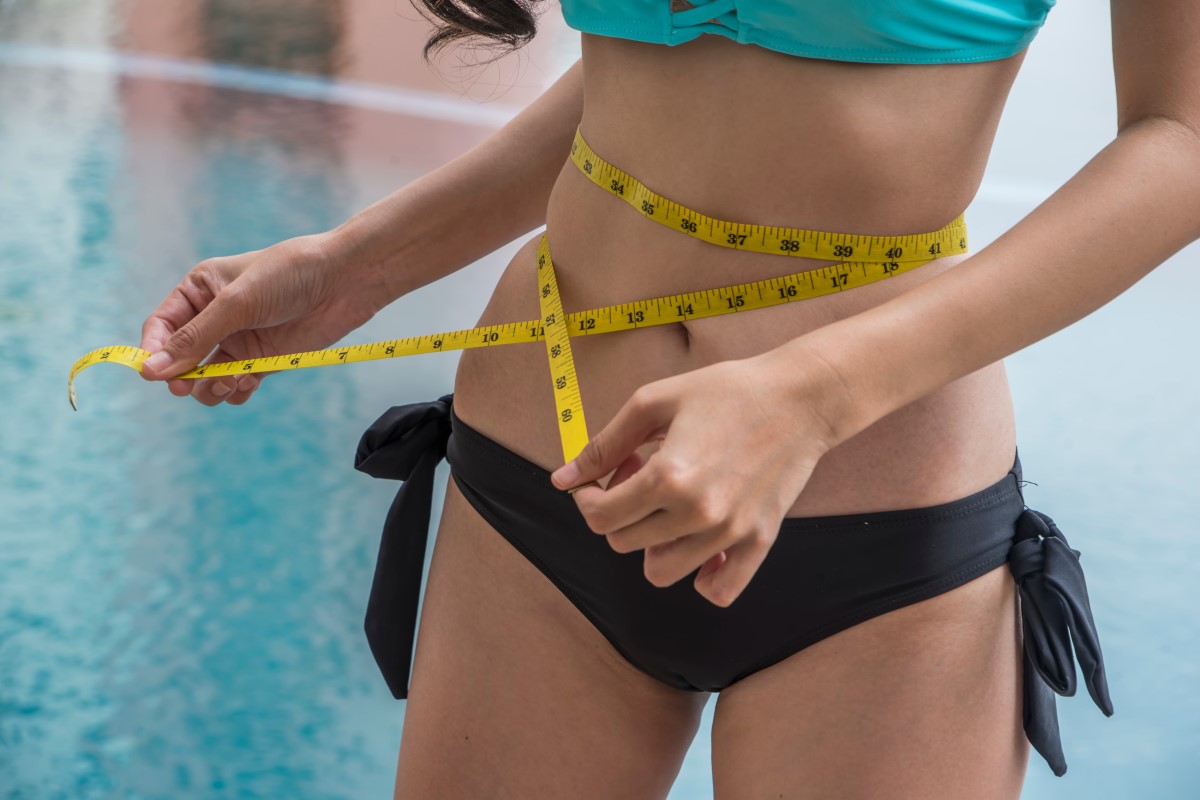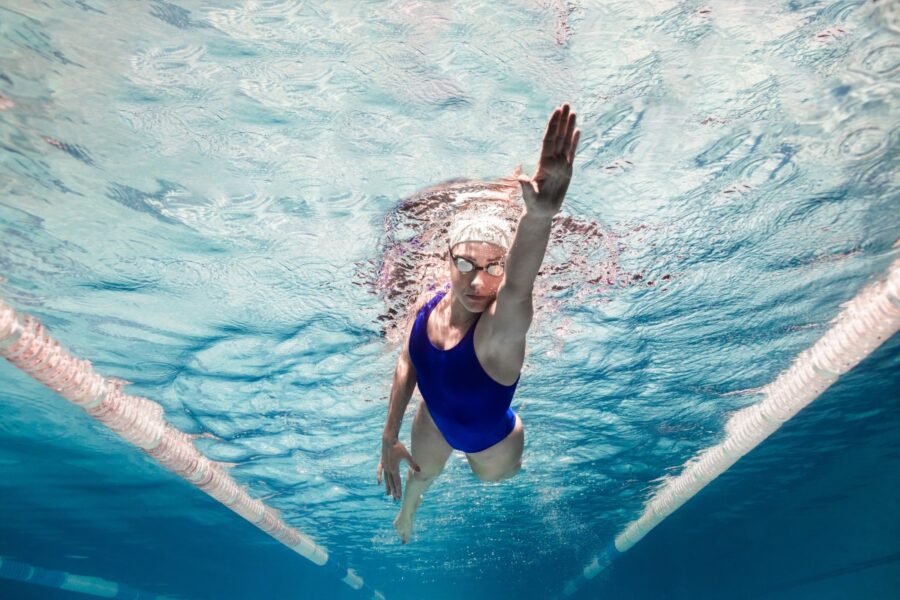
Swimming has many perks. We’ve discussed the stroke that burns the most calories and the emotional and mental benefits of swimming. Let’s dive into the science of swimming for weight loss. What makes swimming the best exercise for total body weight loss?
One of the best ways to lose weight is swimming.
However, you shouldn’t forget to pair your exercise with a healthy diet. Swimmings lets you lose weight, quickly burn calories and work all the body’s major muscles. Everyone’s weight loss journey is different. A person’s diet, commitment to their workout plan and genetics determine how and when a person loses weight.
DNA & Diet
Let’s talk about the role genetics and diet play in weight loss. Everyone’s body is different, which means how your weight fluctuates varies.
Each person’s genetic makeup dictates how their body reacts to different foods, environments and activities. There’s no one-size fits all diet or workout regiment. For example, your body can’t process carbohydrates the same way somebody else’s does. Your body might process them more quickly or more slowly.
A good diet lies between the intersection of genetics and diet. Consult a doctor or registered dietician to find a diet that works for you. Getting your diet right makes weight loss easier as your body becomes more efficient.
Losing weight is about your behavior alongside genes and diet.
Swimming for Weight Loss
Whole. Body. Work. Out
You use almost all of your muscle groups to push through the water. Different strokes use different muscles and allow you to target and use every muscle during a workout session. Switching strokes allows you to add variety to your set(s).
Swimming is the best resistance exercise for toning muscles and building strength!
Each stroke uses different muscle groups to execute each technique. However, all swimming strokes develop the following muscles:
- The core and lower back
- The shoulders
- The forearms
- The upper back
- The booty and hamstrings
Cardiovascular & Respiratory Health
It’s time to talk about calorie burning! Two body systems play a crucial role in weight loss.
Swimming is an aerobic exercise that strengthens the heart by helping it become larger; a bigger heart is better at pumping, which moves blood through your body faster. According to Swim Strong Foundation, swimming 30 minutes per day can reduce coronary heart disease in women by 30-40%. Regular aerobic exercise can reduce blood pressure. Studies show aerobic exercise like swimming can keep the layer of cells lining your arteries flexible and in good shape.
Our lungs send oxygen to our muscles when we work out. The larger the lungs, the more oxygen our muscles receive. Strong, healthy lungs improve sports performance, prevent injuries and support overall wellness.
Low lung capacity results in less oxygen entering the bloodstream and reaching the cells. During aerobic exercise, your heart rate increases alongside your lung efficiency. Swimming is an aerobic exercise as it activates large muscle groups that need large amounts of oxygen to perform their task.
When it comes to weight loss, using more oxygen yields more results. Swimming exercises your heart and other muscles. It also increases your heart rate, which burns more oxygen and in turn, more calories. These are some reasons why swimming is the best exercise option for weight loss.
The Total Fitness Package
Your body is a machine with many parts that connect. Swimming is perfect for weight loss and other health-related factors; few exercises offer as many benefits as swimming. However, something you might not know is swimming keeps you from dying prematurely.
Researchers at the University of South Carolina conducted a study, following 40,547 men aged 20 to 90 for 32 years. They discovered those who swam had a 50% lower death rate than runners, walkers or men who got exercise; this is the same for women.
Swimming Programs & Routines
For recreational swimmers, we suggest you start with the breaststroke or whichever stroke you’re best at performing. The routine below assumes you’re swimming in a standard recreational pool which is 25 yards (22.86 meters). Here is a basic swimming workout routine for weight loss; you can feel free to change up. As you get more comfortable, faster and better, challenge yourself more.
Warm Up (5-10 minutes)
Start your workout by warming up your muscles to prevent injury. You can do your warm up outside the pool or warm up in the pool. Try swimming a few slow freestyle laps to get your heart rate up. You can also combine them and do five minutes out of the pool and five minutes in the pool to warm up.
Kick (5-7 minutes)
A good kick set continues to warm you up and raise that heart rate. Some swimmers use kick-boards, but you also extend your arms in a streamlined position or kick on your back.
Your kick should start at the hip, not the knees, which means you’re using your entire leg to provide propulsion. Keep your kick narrow and steady. An up-and-down motion slows you down as it creates drag and reduces the power you need to generate.
Main Set (10-15 minutes)
Here’s the fun part! The set should help you maintain a high heart rate over an extended period to burn maximum calories. Start by swimming two to four lengths of the pool quickly. Rest for 5-10 seconds and repeat. Beginners should repeat the set three to five times; those who swim for fitness, complete 10-15 sets. Avoid overexerting yourself and listen to your body. If you can’t do more than one or two sets, move on to the cool down phase and increase the set number week by week.
Cool Down (5 minutes)
Your body needs to recover from the main set. As with any exercise, suddenly stopping isn’t good for your heart. Continue swimming at a comfortable pace; think at a similar speed to your warmup.
Routine Frequency
How often you work out depends on your fitness level. If you start swimming for weight loss purposes. Start with 30 minutes of moderate intensity and incrementally increase your time each week. Commit to three to five days of swimming per week if it’s your main form of exercise. You can always add resistance gear to up the intensity and calorie burning!



